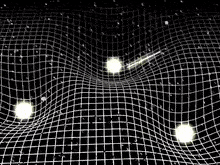Hi, all
Excerpts from a list of ToE criteria:
https://www.motionmountain.net/research.html#req
6. The fundamental constituents must determine all observables. They must also determine all coupling constants and particle masses. (If they did not, the theory would not be final.)
This point, simply spoken, does support my thesis in some posts above here of the Microcosm and Macrocosm and ToE. But this list point is more or less precise about this criterion.
7. The fundamental constituents must be the only unobservable entities. (If they were observable, the theory would not be final; if more entities would be unobservable, the theory would be fiction, not science.)
I don’t know how the list maker does argue for this point – but to my understanding the list maker does build this ToE criterion on the theory of quanta and QM. And also on the logical situation of only one unobservable. – If it were two or more – the logic and physics? in this ToE, would collapse. Probably the first part of point 7 is built or made upon the logical and physical? impossibility of two or more unobservable entities. The maker of this list has my regards of a physical and logical thorough understanding of the nature and the criteria of ToE. This judgment, by me, of the list is based of all list points. In fact I’m almost chocked over the way this list expresses ToE. I can here almost understand that Hawking and Mlodinow does throw in the towel – not by exhaustion – but by chock. That, for to return to point 7, the list maker only accepts one (1) unobservable is probably also based on the search of a “pure logic” that a ToE theory hopefully would manifest. (The human natural? search for truth and logic.) I must say that I’m a bit unclear about this point 7. It would be nice to hear what the list maker has to say about this.
8. Non-locality must be part of the description; non-locality must be negligible at everyday scales, but important at the Planck scale. (Otherwise, the contradictions between quantum theory and general relativity would not be solved.)
This point is as it says based on quantum theory and GR and both having legal demands on a ToE.
9. Physical points and sets must not exist at Planck scale, due to limitations of measurement precision; points and sets must only exist, approximately, at everyday scales. (Otherwise, the contradictions between quantum theory and general relativity would not be solved.)
This point Nr 9 does manifest the standard model of elementary particles – which almost all is confirmed. Only, for the moment, lacking one or two definitions. Simply this point does manifest particles as electrons or protons and such.
10. The final theory cannot be a set of equations. (If it were, it would contradict the limits to measurement precision.)
This point Nr 10 is a hard criterion for a ToE. – But probably the list maker is right. A set of equations does probably diverge the mathematics and physics. Especially when ToE goes from Microcosm up till Macrocosm scale. The base equation would, of course, allow other equations drawn upon the base. But a set of independent equations does rather soon diverge the physical accuracy. How can Hawking and Mlodinow support such physics?
OK, the list is astonishing, but also a bit chocking. Seeing forward to some other views.
Regards
/admin
